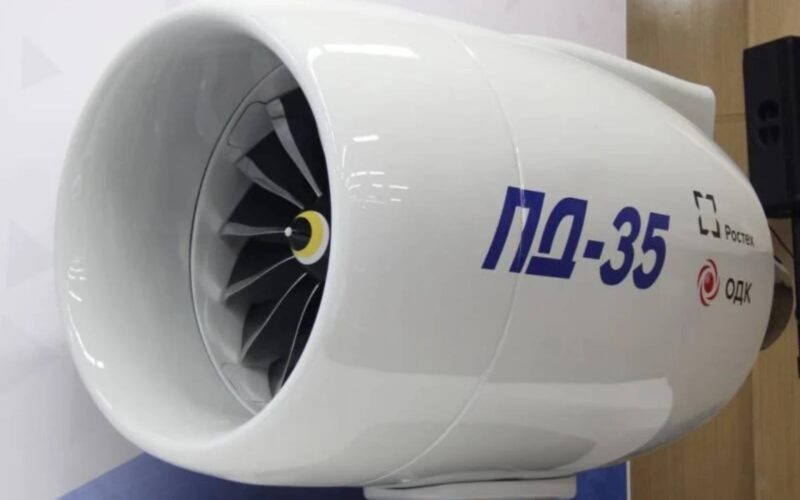The Aviadvigatel PD-35 high-bypass turbofan being developed by Russia’s United Engine Corporation (UEC) has been delayed by two years.
“Regarding the PD-35, we planned the deadline for 2027-2028,” chief engineer of UEC Alexander Inozemtsev said at the Perm engineering-industrial forum, according to Russian state news agency TASS. “Now, due to all the events, [the deadline] moves a couple of years to the right.”
This could mean that the engine will not be ready earlier than 2029. Inozemtsev added that the delay was caused by the need to allocate more resources to the company’s other projects, such as the PD-14, PD-8 and PS-90A.
The PD-35 is an upscaled and modified version of the PD-14, which is currently under development and is expected to power the MC-21, Russia’s upcoming mid-range airliner.
Intended to compete with the likes of the Rolls-Royce Trent 1000 and General Electric GEnx engines, the PD-35 is planned to develop up to 77,000 pounds of thrust.
The PD-35 is expected to be one of the engine options for the CR929, a wide-body airliner being jointly developed by China and Russia, as well as power Russia’s upcoming PAK VTA strategic airlifter. Additionally, the engine could be mounted on existing Ilyushin Il-96-400M and Antonov An-124 aircraft used by the Russian military and airlines.
Ripple effects
The delay of the PD-35 likely means additional trouble for the CR929. With Western sanctions prohibiting the supply of aircraft parts to Russia, only Chinese carriers would be able to operate the aircraft with Rolls-Royce and General Electric engines.
Earlier reports indicated that the PD-35 was planned to be mounted on CR929s belonging to Russian airlines. The delay of the engine could delay the service entry of the aircraft as well.
In September 2022, Chinese media reported that the CR929 was being completely redesigned with the Western sanctions in mind, dropping several years of progress on the jet that already saw years-long delays.

